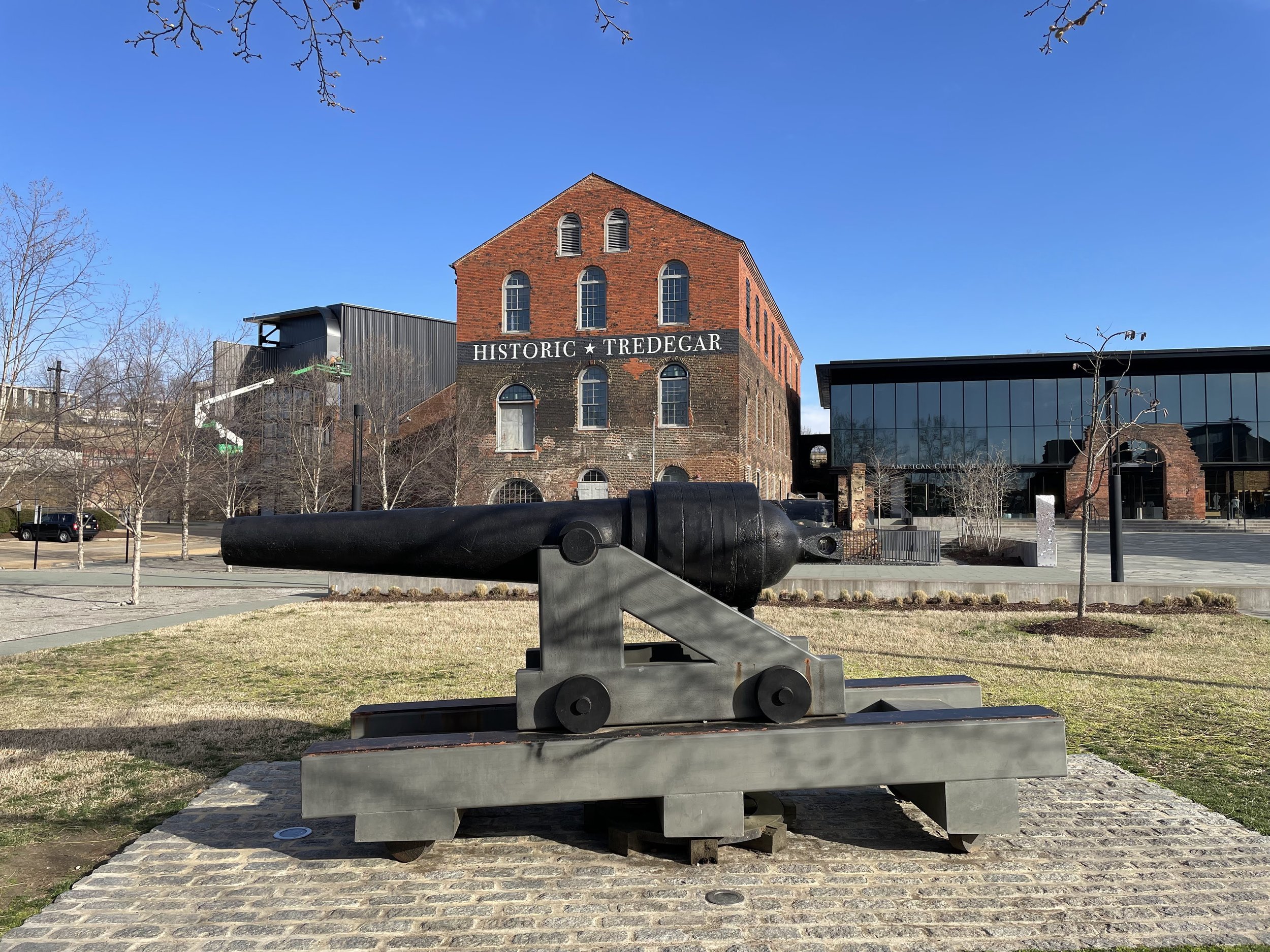
The 6.4-Inch Brooke at Historic Tredegar
A Double Banded 6.4-Inch Brooke Rifle is displayed outside of Historic Tredegar Ironworks in Richmond, Virginia where it was originally manufactured in 1862.
The Brooke in Richmond is marked with the Tredegar foundry number 1633 and as weighing 9,400 pounds as manufactured. Number 1633 was cast at Tredegar on or about July 26th, 1862.

4.62-Inch Gorgas Rifle at Stony Creek, Virginia
A 4.62-Inch Siege Rifle cast by Bellona Foundry (near Richmond) in 1862 may be found in Stony Creek, Virginia. Weight of 5,360 pounds is stamped on the breech. The right trunnion reads "BF / JLA" (Bellona Foundry / Junius L. Archer).
Olmstead et al. identifies this cannon as a "Gorgas Rifle", a type manufactured by both Tredegar and Bellona. This example is the only known survivor of the type. As noted in "The Big Guns", this rifle is nearly identical to the 4.62-Inch "Gibbon and Andrews" rifle found at Fort Branch except for the latter rifle being banded and therefore eight hundred pounds heavier.
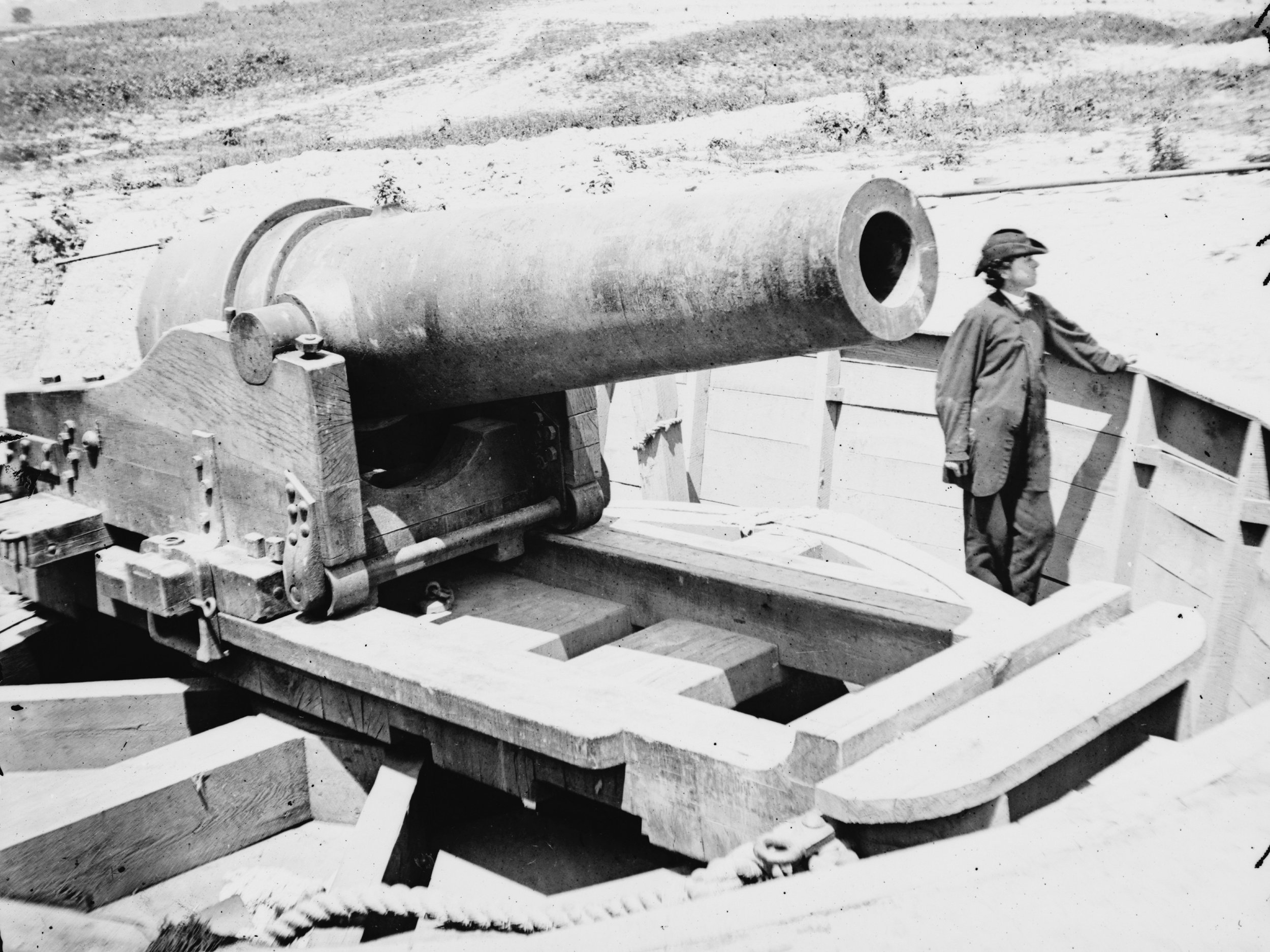
A Brooke Smoothbore at Dutch Gap on the James River
Four photos of the same heavy Brooke Smoothbore seem to have been taken at the same time. The cannon was emplaced overlooking the James River at the Dutch Gap.
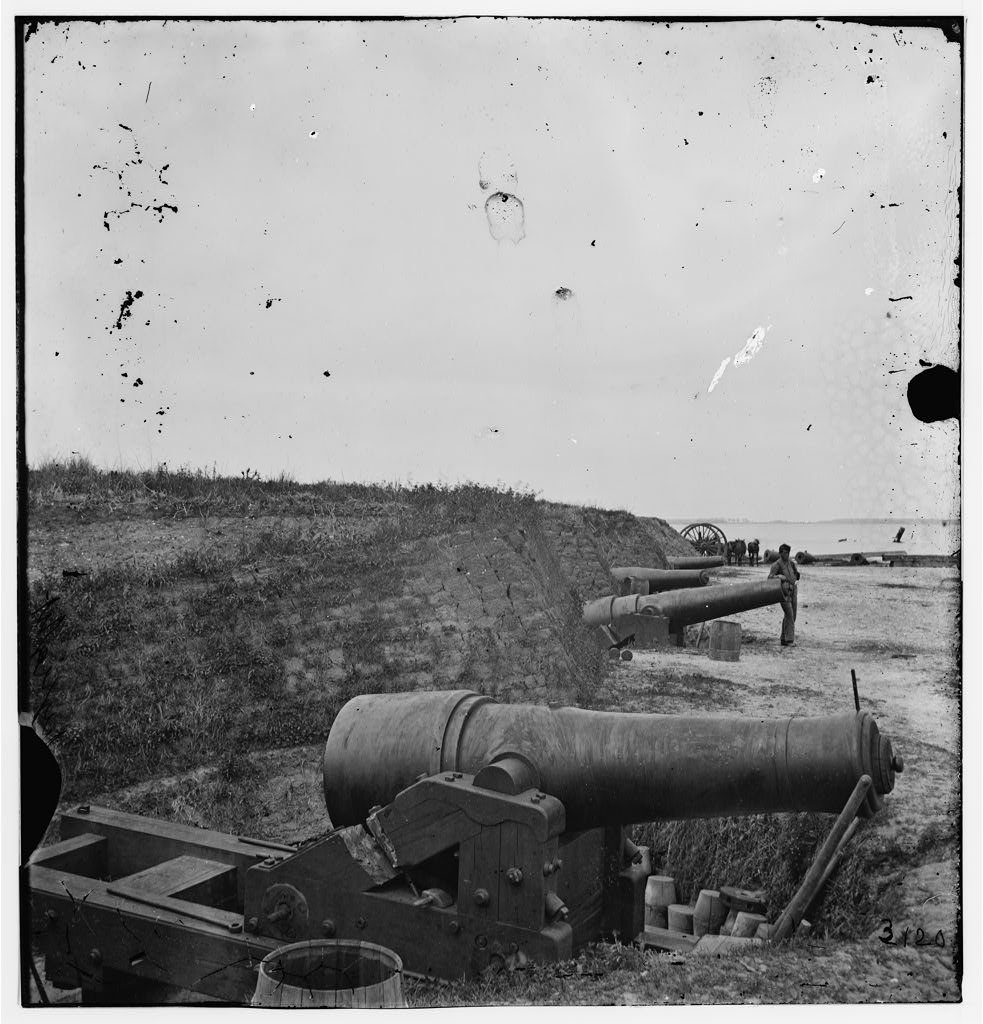
Fort Johnson in 1865
Fort Johnson, which dated to colonial times, had fired the "signal" mortar round at the beginning of the Bombardment of Fort Sumter, and which had been a major component of the defenses of Charleston harbor - especially after the reduction of Fort Sumter, was photographed in 1865. These photos, available in high resolution on the Library of Congress website, show the four heavy cannons facing the shipping channel, along with carriages, implements, projectiles, and more.

The 4.62-Inch Gibbon and Andrews Rifle of Fort Branch
The only (known) surviving 4.62-Inch Gibbon and Andrews Rifle is part of the remarkable collection of original artillery at Fort Branch near Hamilton, North Carolina. This Confederate siege rifle was recovered from the Roanoke River at Fort Branch in 1977 having been submerged since the fort was destroyed and abandoned in April of 1865. It was recovered still mounted on the remains of its siege and garrison carriage which is also on display in the Fort’s museum.

The Cannons at Fort Fisher
The Second Battle of Fort Fisher was fought from January 13th - 15th, 1865. This post gives an overview of the major types of heavy cannons present in the fort and aboard the fleet. The cannons pictured include Columbiads, Brooke Rifles, Dahlgren Cannons, and Parrott Rifles.
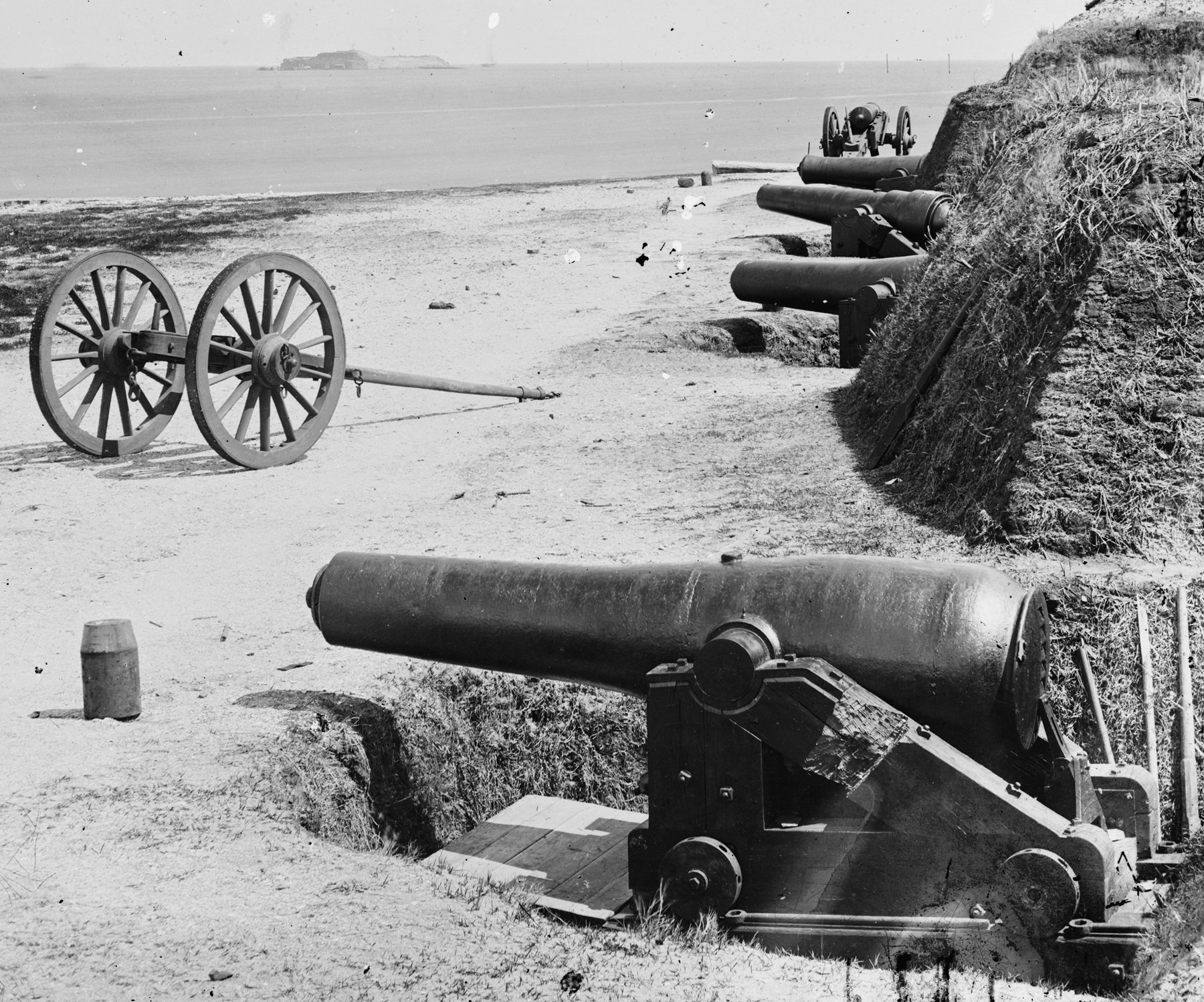
Heavy Artillery of the Confederacy in the American Civil War
This post is an overview of the major types and systems of heavy naval and seacoast artillery operated by the Confederate Army and Confederate Navy during the American Civil War. The principle types used were: Pre-War US Army cannons and Columbiads, Pre-War US Navy cannons and Dahlgren guns, Confederate Columbiads, Brooke Rifles and Smoothbores, banded and rifled cannons, and British rifles.
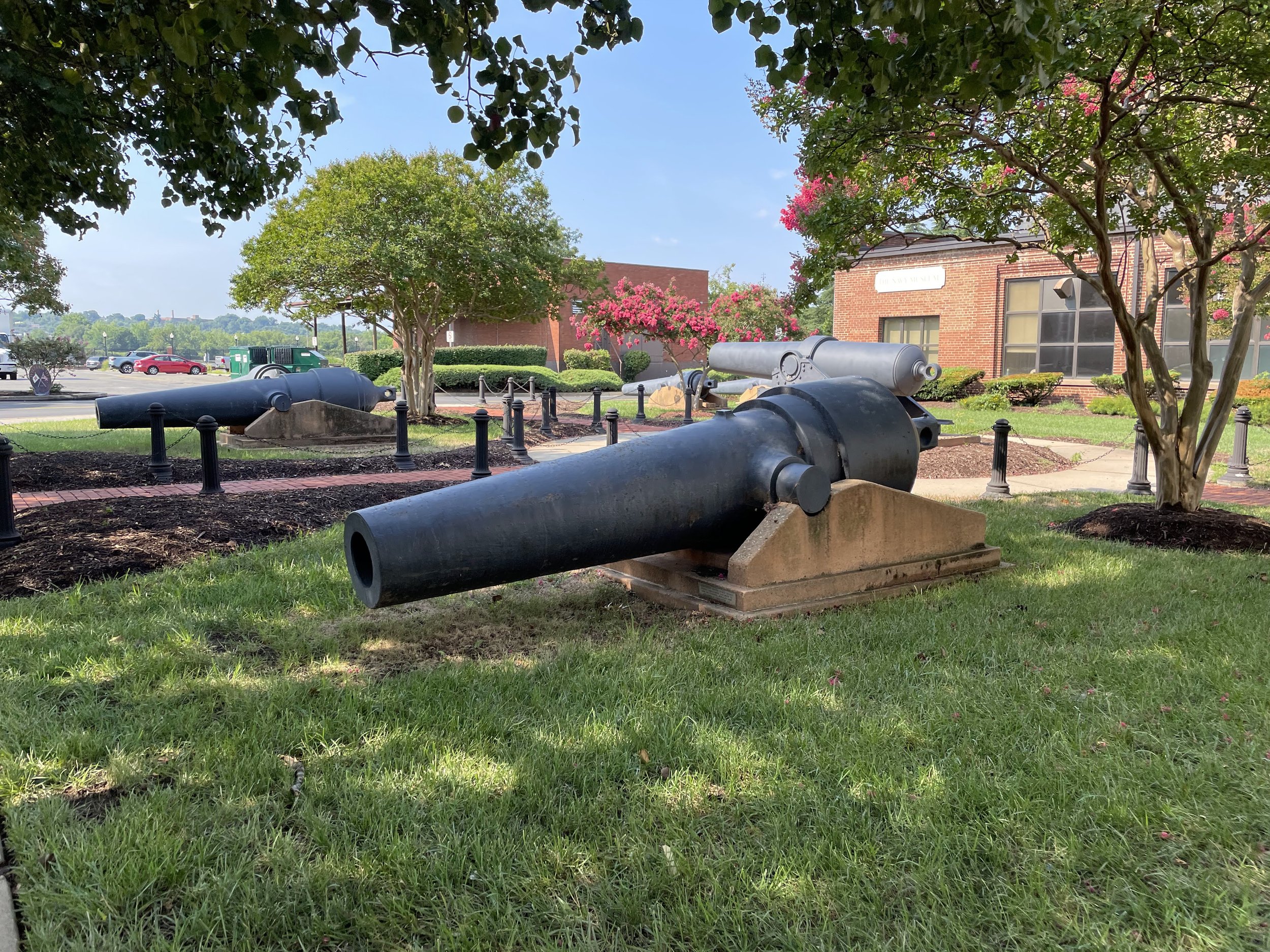
The 10-Inch Brooke Smoothbore of CSS Columbia
A 10-Inch Brooke Smoothbore is one of nine Brooke cannon displayed as trophies at the Washington Naval Yard.

The Brooke Rifles of CSS Tennessee
Four Brooke Rifles carried aboard CSS Tennessee at the Battle of Mobile Bay are displayed as trophies at the Washington Navy Yard.
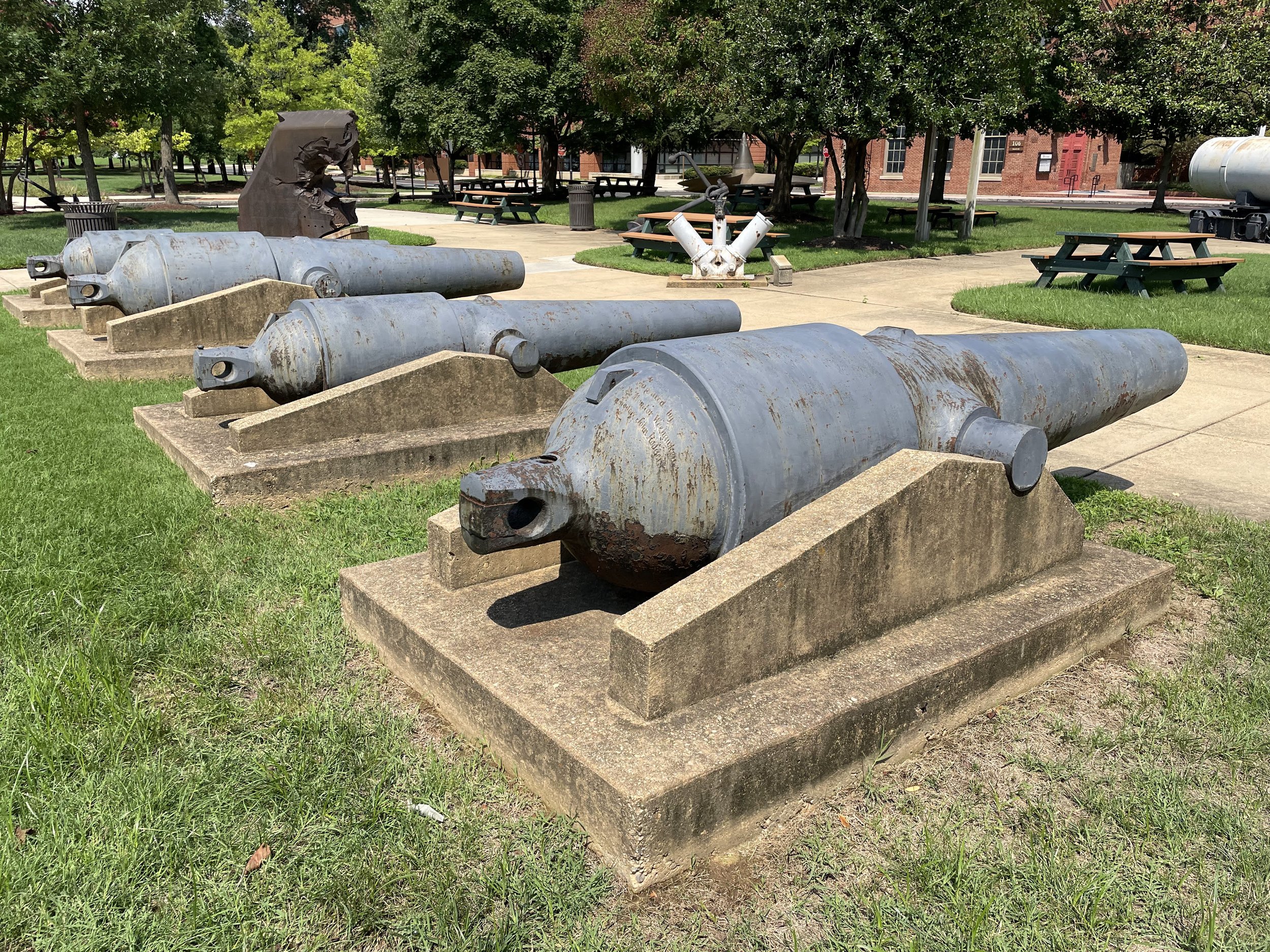
The Single Banded Brooke Rifles of CSS Atlanta
Four Brooke Rifles captured from CSS Atlanta are displayed as trophies at the US Navy's Washington Navy Yard.
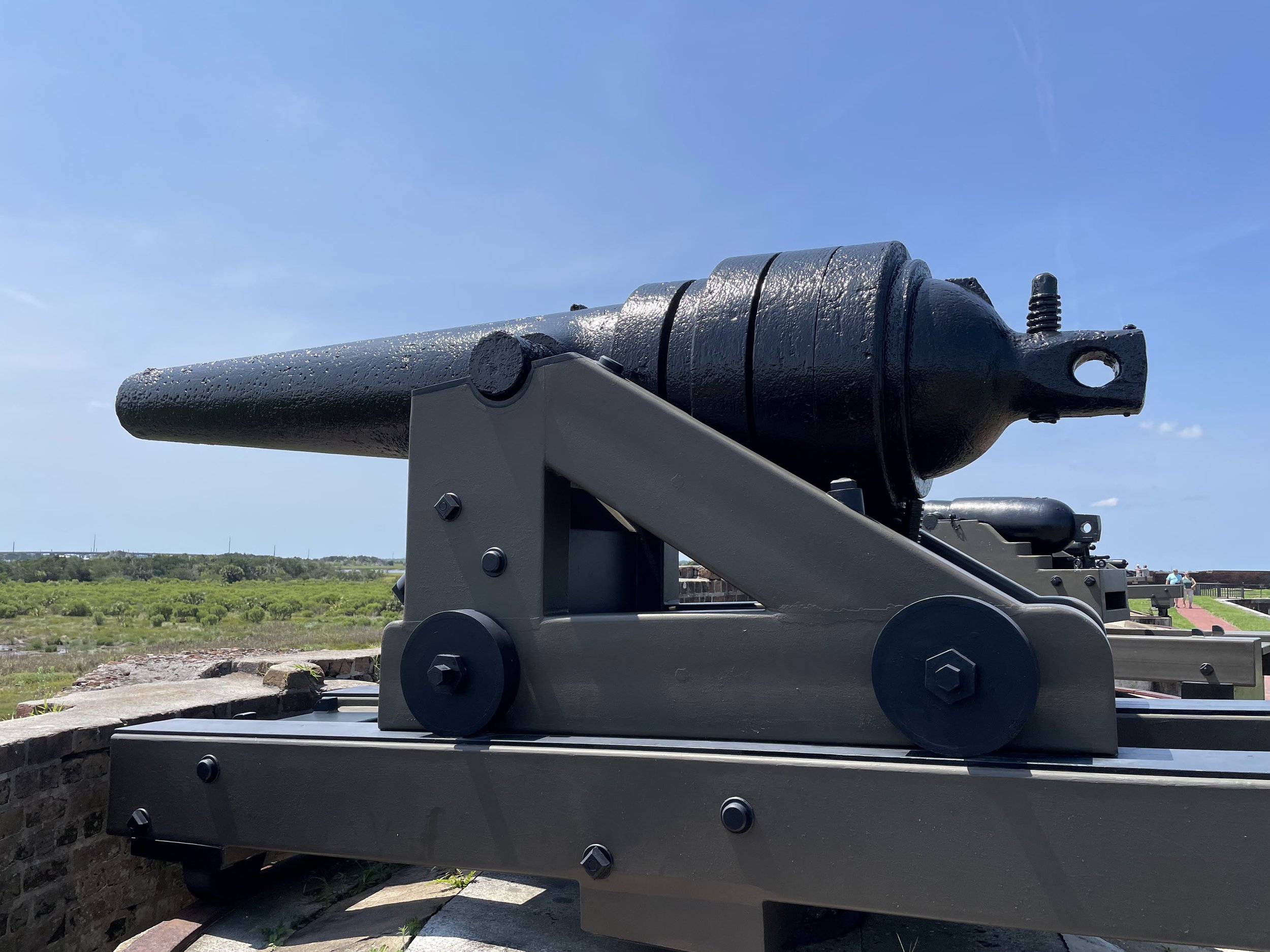
6.4-Inch Brooke Rifle at Fort Pulaski
A 6.4-Inch Double Banded Brooke Rifle is displayed at Fort Pulaski near Savannah, Georgia.

The Citadel’s Cannons
Displayed on the campus of The Citadel in Charleston, South Carolina are two 2.9-Inch Parrott Rifles, two Model 1841 6-Pounders, a 3.3-Inch Parrott Rifle, and a 7-Inch Brooke Rifle.
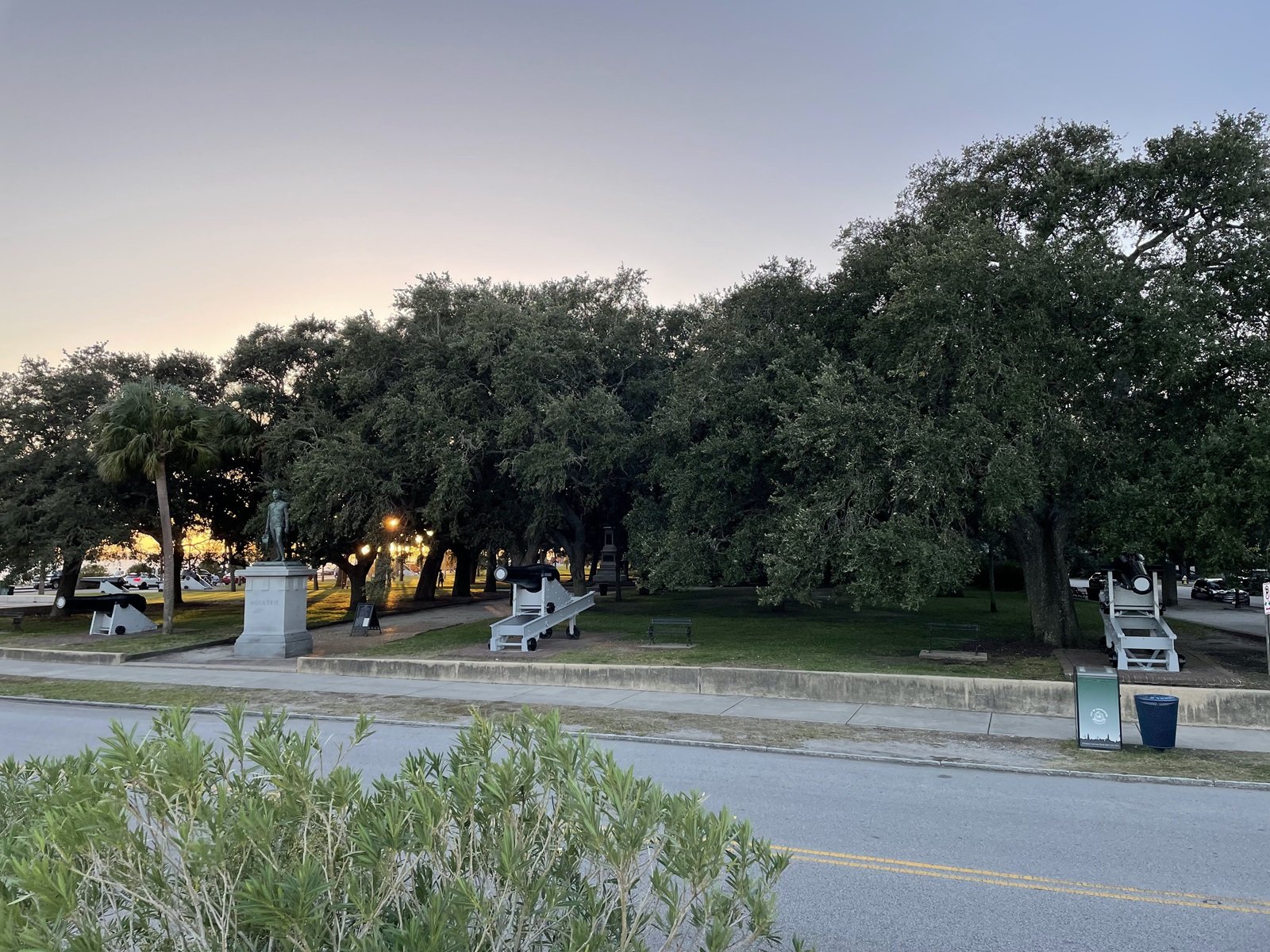
“The Battery” at White Point Gardens - Then and Now
Explore early 20th Century (1900-1910) and present day views of the American Civil War Cannons at White Point Gardens in Charleston.

7-Inch Triple Banded Brooke Rifle
Part of the extraordinary collection of seacoast artillery preserved at Fort Moultrie is a Triple-Banded Brooke Rifle.
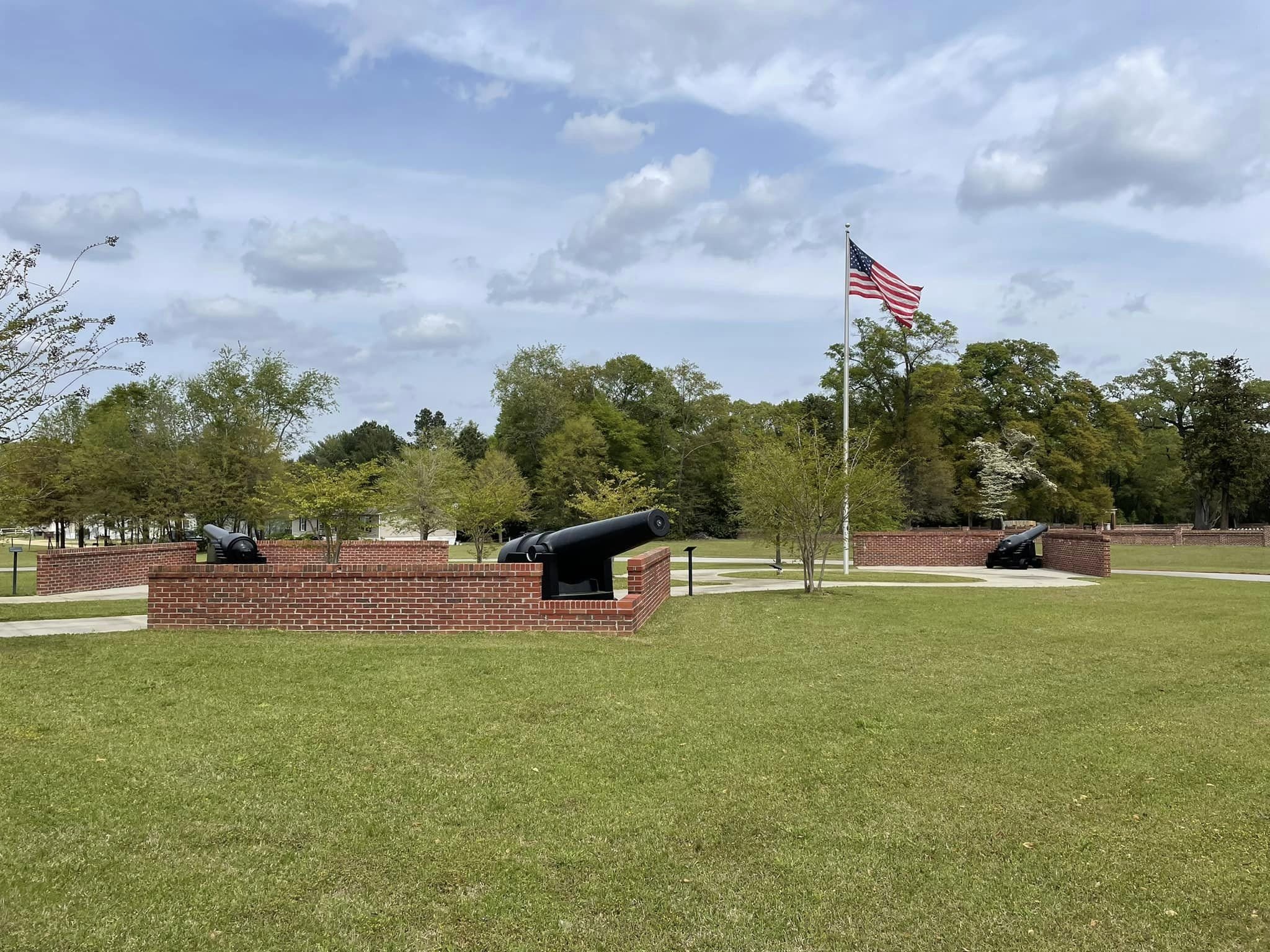
The Guns of CSS Peedee
Three cannon recovered from the wreck of CSS Peedee (including a Dahlgren which saw service on USS Southfield) are on display at the Florence County Veterans Center in Florence, SC.

The 7-Inch Brooke at White Point Garden
A 7-Inch Brooke Rifle, S-76, cast at Selma, Alabama in 1864 is on display at White Point Garden in Charleston, SC.

The Mystery Brooke at The Citadel
This Brooke Rifle sits tucked between bushes on the campus of The Citadel in Charleston, SC. Though it is unlabeled and often is passed unnoticed, it has an interesting history.

7-Inch Brooke Rifle at Fort Morgan
This is a placeholder page. A 7-Inch Double Banded Brooke Rifle is displayed at Fort Morgan near Mobile, Alabama.
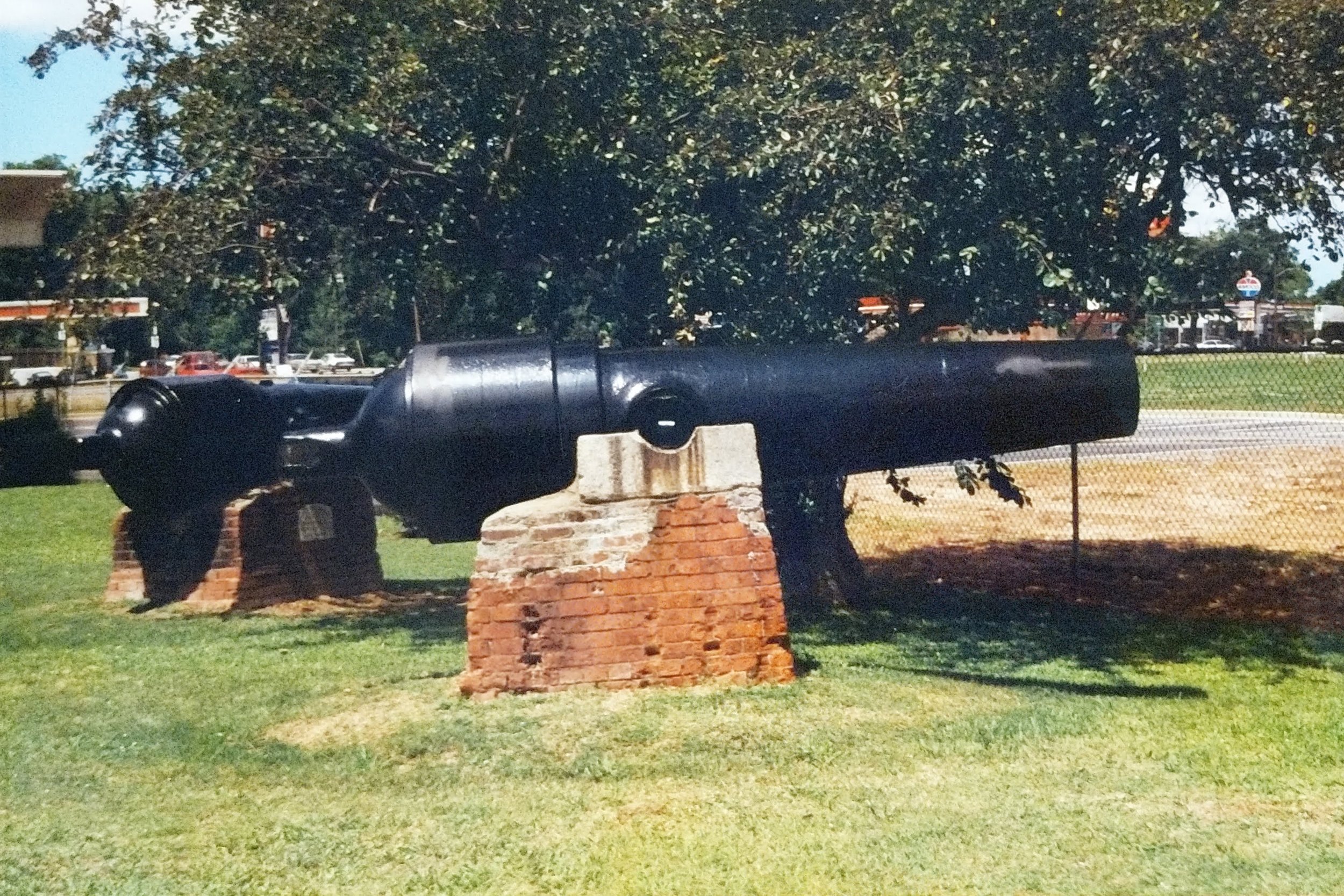
Brookes at the National Civil War Naval Museum
Placeholder page showing the two Brooke smoothbores and two 7-Inch Brooke Rifles preserved at the National Civil War Naval Museum in Columbus, Georgia. Photographs were taken by the author in the late 1990s.

6.4-Inch Brooke Rifle in Richmond, Virginia
A 6.4-Inch Brooke Rifle is displayed at The American Civil War Museum at Historic Tredegar in Richmond, Virginia